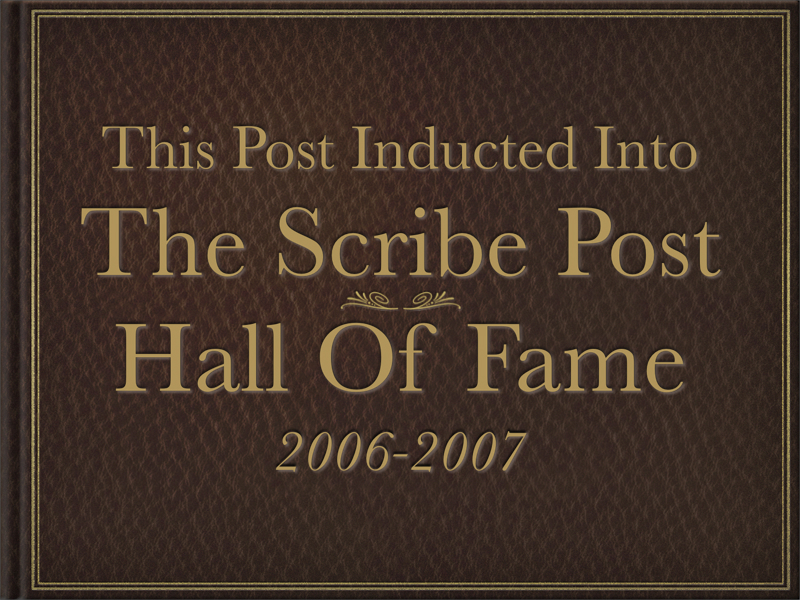
Factor the following. Notice any pattern?
x² + 2x + 1
x² - 4x + 4
x² - 6x + 9
x² - 8x + 16
x² - 12x + 36
When the above equations are factored out, you should notice a pattern starting to appear. The following pattern should look like this:
x² + 2x + 1
= (x - 1)(x + 1)
x² + 2x + 1
x² - 4x + 4
x² - 6x + 9
x² - 8x + 16
x² - 12x + 36
When the above equations are factored out, you should notice a pattern starting to appear. The following pattern should look like this:
x² + 2x + 1
= (x - 1)(x + 1)
= (x+1)²
x² - 4x + 4
= (x - 2)(x - 2)
= (x - 2)²
x² - 6x + 9
= (x - 3)(x - 3)
= (x - 3)²
x² - 8x + 16
= (x - 4)(x - 4)
= (x - 4)²
x² - 12x + 36
= (x - 6)(x - 6)
= (x - 6)²
Not only are all these equations trinomials, but because what we see as the result of them being factored appears to be a pattern, we call these equations, 'perfect square trinomials'.
= (x - 6)²
Not only are all these equations trinomials, but because what we see as the result of them being factored appears to be a pattern, we call these equations, 'perfect square trinomials'.
A few days ago, we worked and discussed about the following equation of a parabola:
f(x) = x² + 2x - 8
When the above general form is factored, we get:
= (x + 4 )(x - 2)
Using the factored form above, the roots and the y-intercept of the parabola can now be easily identified:
= (x - 4)(x - 2)
Roots: -4, 2
(Looking at the general form, we know immediately that -8 is the y-intercept)
Now that we know the roots, we can determine the vertex of the parabola, by simply adding the two roots together, and dividing by 2. After all, the vertex is the middle point of the parabola.
Vertex = -4 + 2
= -2/2
= -1
Using the vertex, and roots, the points on the graph would appear to be:
 The black points located on -4 and 2 are the roots.
The black points located on -4 and 2 are the roots.The blue point located on -1 is the vertex, which is also the location for the axis of symmetry.
The red point located on -8 of the y-axis is the y-intercept.
----------------------------------
Are you still with me? I'm hoping you are! If you noticed above, the equation f(x) = x² + 2x - 8 was written in its gerenal form and its factored form. Yet there's one form we still haven't written it as, which is its standard form. The standard form for this equation would look like this: f(x) = (x + 1)² - 9
This is what we did:
f(x) = x² + 2x + 1 -9
= f(x) = x² + 2x - 8
 There you have it! This beautfiully drawn (sarcasm) parabola was created with the equation
There you have it! This beautfiully drawn (sarcasm) parabola was created with the equationf(x) = (x + 1)² - 9
... And also appears to be a perfect square.
-------------------------------
You can do many things to a parabola. Push it up or down, shift it to the left or right, squeeze it, widen it, etc.
We discussed in class what you can do to push the parabola up 1 unit. We did the following:
i.e
g(x) = x² + 2x - 7
= (x + 1)² -8
Where -8 is parameter k. With parameter k, you can position the parabola either up or down by changing the number.
Let's look at another example of an equation and turn it into a perfect square:
i.e
g(x) = x² +2x + 5
(general to standard)
To turn that into a perfect square, you must add zero.
g(x) = x² + 2x + 1 - 1 - 5
This is legit, because +1 and -1 equal zero, therefore we get:
g(x) = (x + 1)² - 6
The process you have just seen and we discussed in Friday's class is called,
'completing the square'.
-------------------------------------------------------------------
How do you know if a trinomial is a perfect square?
- Last digit and first terms are always perfect squares.
- Constant terms always positive.
- Half of b ( f(x) = ax² + bx + c ) is the square root of the last digit.
Here's an example of an equation of a parabola written in perfect square:
y = x² - 8x - 11
(as we look back, x² - 8x + 16 is a perfect square trinomial, so to turn this into a perfect square, we must turn the '11' into '16')
So ..y = x² - 8x + 16 - 16 - 11
= (x - 4)² - 27
Where the vertex would be the opposite of -4, which will be +4.
And there you have it! A lesson in
perfect square trinomials and
completing the squares.
---------------------------------------------
REMINDER: The "Quiz 2 - Quadratic Functions"
worksheet we did in class, finish it, and review it!
SIMILAR QUIZ ON MONDAY, SEPTEMBER 18!
---------------------------------------------
ANNNNNDDDDDD, FINALLY.
The next scribe will be ..
S - A - N - D -Y !!!!!!!!!!
Yes, Sandy, you're the next scribe (:
Seeee ya tomorrow.

Hi Cherrieeeeee,
ReplyDeleteCongratulations on your Hall of Fame Scribe Post! I felt I was in class with a master teacher as I read! Using questions to keep your reader focused is a great technique.
Best,
Lani